Introducing a technological marvel that has reshaped air defence strategies. Let’s Explore The Russian S-400 SAM System In Detail. This highly advanced mobile surface-to-air missile (SAM) system was created by Russia’s NPO Almaz in the 1990s to improve upon the already successful S-300 family. Deployed on April 28, 2007, this impressive air defence technology has become a significant game changer in the field of SAM systems. The first battalion of the S-400 assumed combat duty with exceptional skill and precision, setting a benchmark for national defence and security.
With its advanced radar and missile technology, the S-400 is a force to be reckoned with, empowering nations to safeguard their skies against any airborne threats. So, Let’s Explore The Russian S-400 SAM System In Detail delving deep into the inner workings of this awe-inspiring system, uncovering its intricate design and unparalleled capabilities, and discovering what makes the S-400 a true marvel of modern technology.
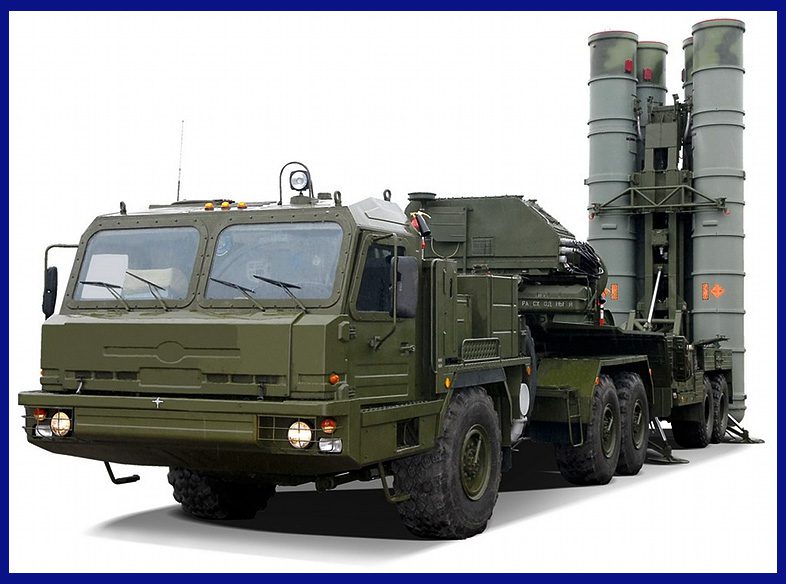
The S-400 Triumf, known as the SA-21 Growler in NATO terminology, originated in the late 1980s and was publicly disclosed by the Russian Air Force in 1993. Following a series of effective trials conducted in February 1999 at Kapustin Yar in Astrakhan, the system was slated for deployment within the Russian army by 2001. Overseeing the project was Dr Alexander Lemanskiy from Almaz-Antey, who assumed the role of chief engineer for the S-400 initiative.
In 2003, a revelation came to light indicating that the S-400 system was still in a state of unpreparedness for deployment. This concern was articulated by two senior military officials in August, who noted that the system was undergoing testing using outdated interceptors sourced from the S-300P system. Consequently, it was deduced that the system had not yet attained the necessary level of readiness for operational use.
The culmination of the project occurred in February 2004, and a mere two months later, in April of that year, the system effectively intercepted a ballistic missile during a test featuring the upgraded 48N6DM missile. The official approval for the S-400’s service finally materialized in 2007. Subsequently, in October 2018, a reliable source within the domestic defence industry disclosed that Russia had formally incorporated the 40N6 long-range missile into the S-400 air defence system.
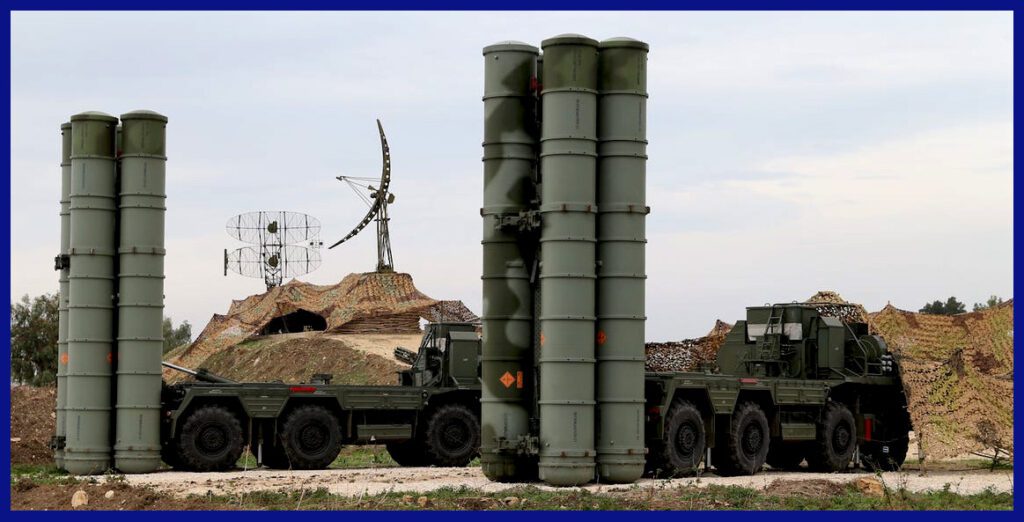
Versions and Specifications of the S-400 Triumf Missiles
The S-400 Triumf missile system has a total of 72 launchers and can control up to 384 missiles. The launchers are divided into eight battalions, and some of the missiles have a range of less than 250 km. The missiles are fired from launch tubes that use a gas system. Once the missile reaches a distance of 98 feet (30 meters) from the launcher, the rocket motor ignites. If a Transporter Erector Launcher ( TEL ) is carrying the long-range 40N6 missile, it can only hold two missiles due to their large size, instead of the usual four.
The missile has been tested successfully, hitting an aerial target 400 km ( 250 mi ) away. Another missile, the 9M96, was tested and seen rising to a height of 56 km. All of the missiles have guided explosive warheads, which makes them more likely to destroy their targets completely.
2016 saw the improvement of guided missiles for the S-300 and S-400 defensive systems used by Russian anti-aircraft missile battalions. The missile system’s anti-aircraft version, which is meant to take out aircraft, cruise missiles, and ballistic missiles, can also be employed against ground targets. The S-400 can only intercept cruise missiles at a distance of roughly 40 km because of their short flight trajectories. ZS-14 launchers are employed by the S-400 system.
About the 40N6E Missile
The 40N6 missile, an integral component of the S-400 Triumf missile system, stands as a formidable long-range projectile. Possessing an extensive operational range that extends up to 400 kilometres and the capability to ascend to altitudes reaching 30 kilometres, this missile emerges as a pinnacle of advanced engineering. Its versatile design equips it to effectively engage an array of potential threats encompassing aircraft, cruise missiles, and ballistic missiles. Earning its distinction within the S-400 system, the 40N6 missile is acclaimed as one of the most sophisticated and cutting-edge projectiles at the system’s disposal.
The 40N6 missile is larger and more powerful than other missiles in the S-400 system, and as a result, only two missiles can be carried on each Transporter Erector Launcher ( TEL ) vehicle, instead of the usual four. It has a weight of approximately 1,893 kg ( 3,970 lbs ) and a length of about 7 meters ( 23 feet ).
The missile is guided by a sophisticated radar system and has a high explosive fragmentation warhead that is designed to destroy its target completely. The 40N6 missile is capable of engaging targets flying at speeds of up to Mach 14 ( 14 times the speed of sound ) and can track up to 36 targets simultaneously. Its long-range and high-altitude capabilities make it a potent weapon in modern air defence systems.
- Range: 400 km ( 248 miles )
- Altitude: 30 km ( 98,000 ft )
- Maximum target velocity: 4,800 m/s ( 11,000 mph ) Mach-14
- Weight: 1,893 kg
- Length: 23 feet
- Warhead: 150 kg ( estimated )
- Guidance: both, Semi-active radar homing and Active radar homing
- Points To Consider In Respect Of The Missile Type: With an active radar homing head, climbs to designated altitude then guidance switches to search & destroy mode. Effective against low-altitude targets at extremely long ranges ( below the radio horizon )
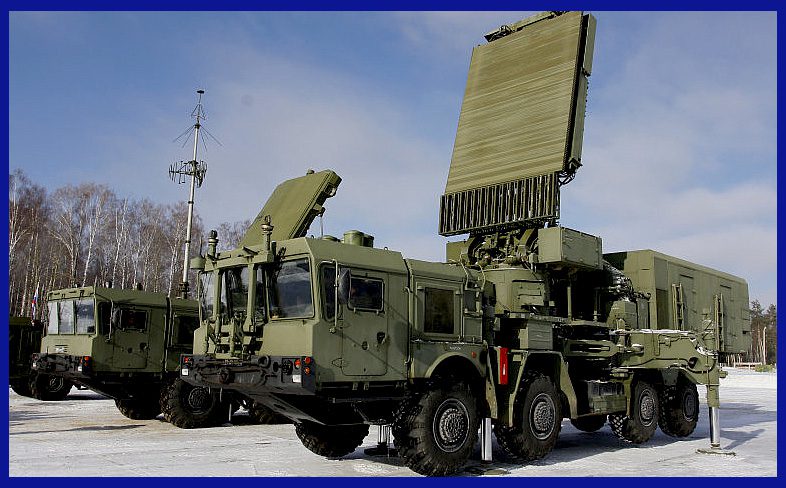
About the 48N6DM / 48N6E3 Missile
The 48N6 missile is another type of missile that can be launched from the S-400 Triumf missile system. It is a long-range, surface-to-air missile that can engage a variety of targets, including aircraft, cruise missiles, and ballistic missiles. The 48N6 missile has a range of up to 250 km and can reach an altitude of up to 60 km.
Crafted for exceptional agility, the 48N6 missile showcases a remarkable capacity for manoeuvrability, meticulously navigated by an intricate radar system. Weighing in at around 1,835 kilograms (equivalent to 3,970 pounds) and extending approximately 7 meters (about 23 feet) in length, this missile attests to its sophisticated engineering. Its potent impact is substantiated by a high-explosive fragmentation warhead, deliberately tailored to comprehensively dismantle and eliminate its intended target.
One of the unique features of the 48N6 missile is its ability to engage targets flying at very high speeds, up to Mach 14 ( 14 times the speed of sound ). It can also track and engage multiple targets simultaneously, making it a highly effective weapon in air defence systems. The 48N6 missile is an older design compared to the 40N6 missile but is still an important component of the S-400 Triumf missile system.
- Range: 250 km ( 160 miles )
- Altitude: 60 km ( 1,96,000 ft )
- Maximum target velocity: 4,800 m/s ( 11,000 mph ) Mach-14
- Weight: 1,835 kg
- Length: 23 feet
- Warhead: 180 kg
- Guidance: Semi-active radar homing
- Points To Consider In Respect Of The Missile Type: Effective against high and low-altitude targets at medium ranges ( below the radio horizon )

About the 48N6E2 Missile
- Range: 200 km ( 120 miles )
- Altitude: 27 km ( 88,583 ft )
- Maximum target velocity: 2,800 m/s ( 6,300 mph ) Mach-8.2
- Weight: 1,835 kg
- Length: 23 feet
- Warhead: 180 kg
- Guidance: Semi-active radar homing
- Points To Consider In Respect Of The Missile Type: Effective against high and low-altitude targets at medium ranges
About the 9M96 and 9M96E2 Missile
The 9M96E2 missile stands as a distinctive projectile compatible with deployment from the S-400 Triumf missile system. This surface-to-air missile, characterized as medium-range, embodies a purposeful design aimed at intercepting an assorted range of targets, encompassing aircraft, helicopters, cruise missiles, and unmanned aerial vehicles. Boasting operational parameters of up to 120 kilometres (equivalent to 75 miles) in range, coupled with an impressive ceiling altitude reaching 35 kilometres, the 9M96E2 missile epitomizes a strategic force in the realm of air defence.
Distinguished by its exceptional manoeuvrability, the 9M96E2 missile integrates seamlessly with a sophisticated radar system to ensure precise guidance. With a weight of roughly 420 kilograms (equivalent to 926 pounds) and an extended length of approximately 4 meters (approximately 13 feet), this missile underscores its advanced engineering principles. A high-explosive fragmentation warhead lies at its core, meticulously engineered to achieve the complete and comprehensive destruction of its designated target.

A defining attribute of the 9M96E2 missile resides in its elevated precision, a feat realized by means of its dynamic active radar-homing guidance system. Notably, the missile holds the capacity to engage numerous targets concurrently, rendering it a remarkably adaptable asset within air defence frameworks. As an integral element of the S-400 Triumf missile system, the 9M96E2 missile emerges as a pivotal component, offering heightened efficacy specifically against agile and low-altitude targets.
- Range: 120 km ( 75 miles )
- Altitude: 35 km ( 1,14,829 ft )
- Maximum target velocity: 2,800 m/s ( 6,300 mph ) Mach-8.2
- Weight: 420 kg
- Length: 13 feet
- Warhead: 24 kg
- Guidance: Active radar homing
- Points To Consider In Respect Of The Missile Type: High hit probability with one missile against fast, manoeuvring targets. It is far more likely to intercept short- to medium-range ballistic missiles when the load factor is more than 20 g at a 30 km altitude.
About the 9M96E Missile
The 9M96E missile finds compatibility with the launch from the S-400 Triumf missile system, embodying a surface-to-air medium-range classification. Deliberately engineered to intercept an assorted array of targets encompassing aircraft, helicopters, cruise missiles, and unmanned aerial vehicles, the 9M96E missile attests to its multifunctional design. Its operational capabilities span up to 40 kilometres (equivalent to 25 miles) in range, complemented by a ceiling altitude that ascends to 20 kilometres, thereby reinforcing its strategic role within the realm of air defence.
Much like its counterpart, the 9M96E2 missile, the 9M96E missile stands out for its exceptional manoeuvrability, impeccably steered by an intricate radar system. Carrying an approximate weight of 330 kilograms (equivalent to 728 pounds) and measuring around 3.5 meters (approximately 11.5 feet) in length, this missile underscores its meticulous engineering. Its core strength lies within a high-explosive fragmentation warhead, meticulously tailored to ensure the thorough and comprehensive neutralization of its intended target.
The 9M96E missile is also equipped with an active radar-homing guidance system, which enables it to track and engage highly manoeuvrable targets with great accuracy. It is capable of engaging multiple targets simultaneously, making it a versatile weapon in air defence systems. The 9M96E missile is considered to be an advanced missile system and is an important component of the S-400 Triumf missile system.
- Range: 40 km ( 25 miles )
- Altitude: 20 km ( 66,000 ft )
- Maximum target velocity: 900 m/s ( 2,000 mph ) Mach 2.6
- Weight: 330 kg
- Length: 11.5 ft
- Warhead: 24 kg
- Guidance: Active radar homing
- Points To Consider In Respect Of The Missile Type: Targeting at the radio horizon, with homing action to aid interception of low-flying targets at long range.
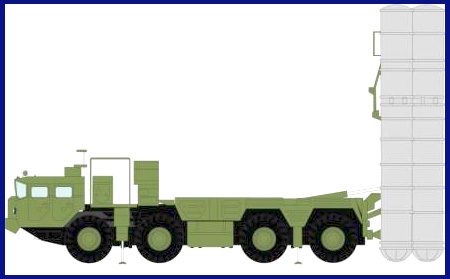
The S-400 Triumf Missiles are Designed to Nutralise Various Types of Targets
- Strategic bombers like the B-1, Xian H-6, and B-52H.
- Electronic warfare aircraft like the EF-111A and EA-6.
- Reconnaissance aircraft such as the TR-1
- Early-warning radar aircraft such as the Xi’an KJ-600
- Fighter airplanes such as the F-15, F-16, F-35 and Helicopters like Harbin Z-19
- All Types Of Ballistic Missiles
- All types of UAVs
However, to protect the entire battery of the S-400 system from incoming air-to-surface ( ASM ) missiles such as HARM, Maverick, Hellfire, JAGM etc. The Morpheus defence system has been developed.
it is a short-range air defence system being developed by Russia to protect the S-400 air defence system from various threats during its terminal phase. The system is designed to engage targets such as aircraft, helicopters, and UAVs, and is expected to have a range of up to 10 kilometres.
The Morfey system is intended to complement the S-400 and S-350E air defence systems in Russia’s Aerospace Defense Forces, providing an additional layer of protection against aerial threats. The development of the Morfey system is part of Russia’s ongoing efforts to modernize and upgrade its air defence capabilities.
Morfey’s creation began in 2007, and its release was intended for 2013, however, it was postponed until at least 2015. The missile system comprises 36 missiles and omnidirectional 29YA6 radar. The missiles can fly up to 3500 m above the ground and have a range of up to 10 km.

The S-400 surface-to-air missile system has been exported to several international countries
Some of the known countries that have acquired or ordered the S-400 system from Russia include China, Turkey, Saudi Arabia, Egypt, Belarus, Algeria and India.
There have also been reports of negotiations or interest from other countries such as Qatar, Iraq, and Vietnam. It’s worth noting that the export of the S-400 system has been a subject of controversy and scrutiny, particularly with regard to potential sanctions from the United States.
The Deployment of the S-400 SAM System with India
The S-400 air defence system has been successfully deployed in India following the nation’s agreement to procure the system from Russia in 2018, in a deal valued at US$5.43 billion (₹40,000 crores). The initial shipment of S-400 missile systems reached India in December 2021, with further phases of deployment anticipated to unfold gradually within the upcoming years.
The deployment of the S-400 system within India holds significant implications, bolstering the nation’s robust air defence capabilities against an array of aerial menaces. Through its versatile functionality, the S-400 system demonstrates its prowess in detecting and neutralizing a spectrum of targets, including aircraft, drones, and ballistic missiles. The procurement of the S-400 by India has generated debate due to potential repercussions, including the prospect of sanctions from the United States under the Countering America’s Adversaries Through Sanctions Act (CAATSA). India, however, has consistently asserted that its acquisition of the S-400 stands as a strategic choice aligned with its imperative national security interests.
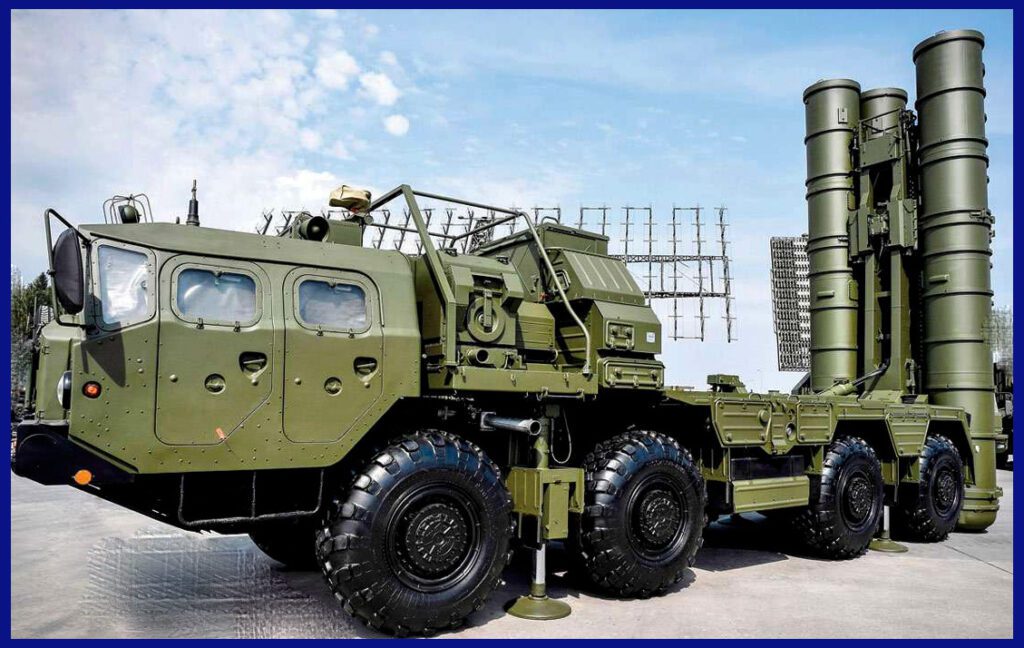
Commencing in April 2022, the delivery of the second S-400 squadron was initiated, subsequently being stationed along the eastern border of India that faces China. Notably, Alexander Mikheyev, the CEO of Rosoboronexport, affirmed the fruitful progression of the contract with India, further noting the imminent provision of a second regiment. The inaugural regiment has already been supplied, accompanied by comprehensive training for over 200 specialists. The completion of all five regiments is slated for attainment before the culmination of 2024.
The delivery of the final two systems will likely depend on resolving concerns related to insurance and establishing a mechanism for balance payments, which are currently hindered by sanctions against Russia. However, it is anticipated that these issues will be addressed by late 2023 or early 2025, leading to the completion of the delivery for the remaining squadrons.
Furthermore, do not miss the chance to seize an exclusive opportunity to own your very own collection of awe-inspiring, extra-large 1/200 scale resin premium models showcasing the legendary XL Antonov An-225 Mriya. These exceptional aircraft, available solely through Air Models, embody sheer excellence and have gained renown for their unparalleled might in the realm of International Cargo Transport. Seize this moment and click the provided links to acquire these remarkable masterpieces. Act now to secure your piece before the limited stock is depleted.

In conclusion, the S-400 Triumf stands as an exceptionally advanced and intricate surface-to-air missile system that has garnered substantial attention and generated controversy due to its remarkable capabilities and consequential geopolitical implications. Its design encompasses the engagement of a broad spectrum of targets across varying altitudes and distances, inclusive of ballistic and cruise missiles, stealth aircraft, and unmanned aerial vehicles. Having been in active deployment within the Russian military since 2007 and having secured export agreements with several nations, the system’s track record is noteworthy.
Nevertheless, alongside its effectiveness, the S-400 has encountered criticism regarding its elevated cost, potential for strategic overextension, and compatibility concerns with other NATO systems. Collectively, the S-400 endures as a compelling subject of interest and discourse within the global defence community.
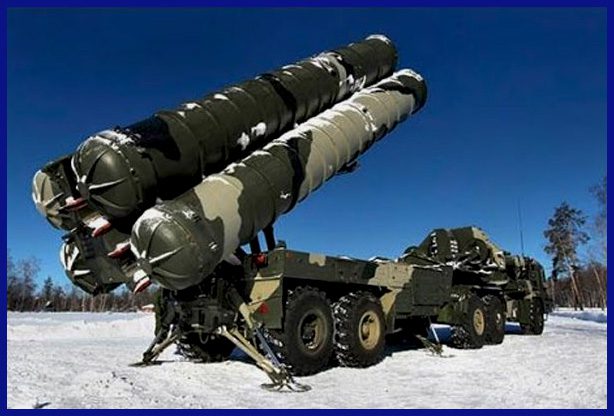
Important Announcement for Our Valued Readers!
After an article is published, it is possible that updates or changes may have occurred beyond the time of publication. Therefore, it is important to be aware that certain information in the article might be outdated. To ensure the most accurate analysis, it is highly recommended to verify the content with the latest sources available.
However, we are dedicated to delivering outstanding articles on military products and global updates. Maintaining quality and smooth operation requires resources. Your support sustains our efforts in providing insightful content. By purchasing high-quality products through our affiliated links, you help us keep our platform alive and acquire top-notch items. Your unwavering support is invaluable and inspires us to strive further.
We welcome your suggestions and requests for more information, as we value feedback from our readers. If there’s specific defence material or equipment not covered on our site, please share your request in the comments. We’ll strive to research and provide the required information. We sincerely thank you for your unwavering interest in our website, and we eagerly anticipate hearing from you! Enjoy your reading experience!
